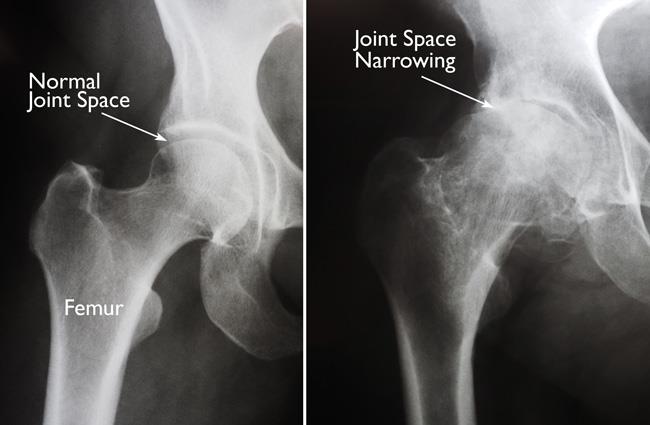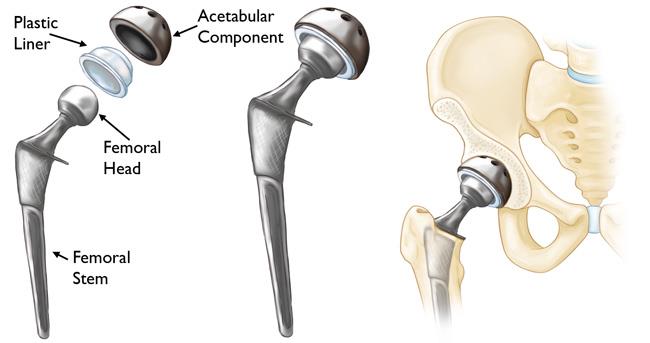Hip replacement is a surgical procedure in which the hip joint is replaced by a prosthetic implant.
Indications:
- Painful hip due to arthritis.


Anaesthesia:
Hip replacement is carried out under spinal epidural anaesthesia. Rarely general anaesthesia can used.
Implant Components:
All of them consist of two basic components: The ball component & the socket component.

Types of hip replacement:
Cemented:
In this hip implant will be fixed to the bone with the help of cement.

Uncemented:
In this the hip implant will be pressfit to the bone and fixed with screws.

Procedure:
The surgeon will remove the damaged cartilage and bone and then position a new metal, plastic or ceramic implants to restore the alignment & function of your hip.
After surgery you will be monitored in the recovery room by anaesthesia team, once stable you will be shifted to the room. Most likely you will be walking within few hours after surgery.
Recovery:
You will be in recovery room for about 3-4 hrs under anaesthetist observation, following this you can be shifted to the room. Majority will be walking within few hours after surgery as we follow FASTTRACK procedure.
The surgeon will instruct you regarding homecare during initial weeks of surgery.
Wound Care:
The surgeon will apply stitches or staples to close the wound and they will be removed approximately two weeks after surgery. You should avoid getting the wound wet.

Diet:
A balanced diet with calcium and iron supplements is necessary for tissue healing and muscle strength. Make sure you drink lots of fluids.
Activity:

Rehabilitation begins immediately after hip replacement. A physiotherapist will teach the important steps which will maintain the motion of the hip joint and ensure you can walk safely.
Your activity program will include a graduated walking program initially in the home and later outside followed by stair climbing.
Dont’s:

1. Avoid cross legged sitting and squatting.
2. Avoid lying down on the surgical side.
Hip Resurfacing:

In this the surgeon will excise the damaged head partially and replace it with a metal component.
Revision Hip Replacement:
The primary replacements which fail due infections, loosening or fracture around the implants, will be changed and new implants will be put in place.
These may be done in single stage or multiple stages.
In the first stage, your doctor will remove the implants and place a temporary cement spacer in your hip. This spacer is treated with antibiotics to help fight the infection and will remain in your hip for several weeks.

When the infection has been cleared, your doctor will perform second surgery to remove the antibiotic spacer and insert a new prosthesis.
